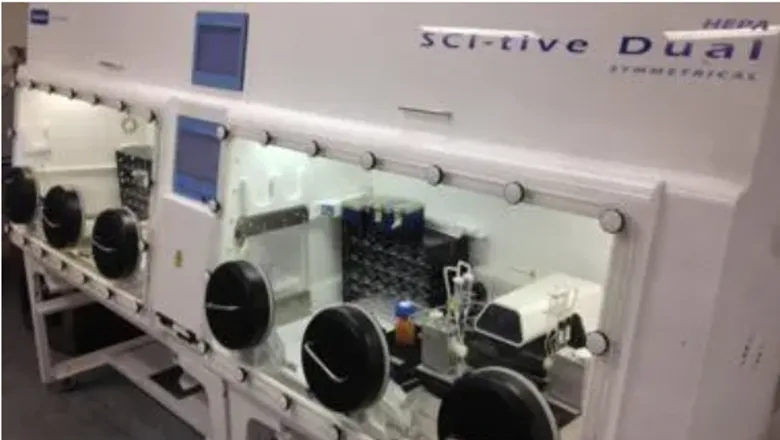Physiological Oxygen Laboratory
Franklin-Wilkins Building, Waterloo Campus, London
Presenters: Prof. Giovanni E. Mann
Title: Physiological Oxygen Laboratory
In vivo, vascular and other cell types are exposed to physiological oxygen levels ranging from to ~2-13 kPa O2, while cells cultured in standard CO2 incubators are exposed to hyperoxic O2 levels (18 kPa O2). Although the importance of studying cellular redox signaling under physiological O2 levels is established, few studies have examined effects of long-term adaptation to different O2 levels (Keeley & Mann, Physiol. Reviews 2019;99:161-234; Sies et al., Nature Rev Mol. Cell Biol. 2022;23:499-515). As molecular mechanisms regulating nitric oxide (NO) and NRF2 mediated redox signaling are primarily studied under hyperoxia, we investigated NO generation and NRF2 gene transcription in endothelial cells following 5d adaptation to 18 kPa, physiological normoxia (5 kPa) or hypoxia (1 kPa) using O2 regulated Baker Scitive and invivO2 500 workstations. Activation of NRF2 and induction of GSH-related genes was insensitive to changes in pericellular O2 levels, whereas induction of HO-1 and NQO1 in response to electrophiles or NO was attenuated under 5 kPa O2 due to enhanced expression of the NRF2 repressor Bach1 (Chapple et al., FRBM 2016;92:152-62). Furthermore, a PP2A-mediated feedback mechanism regulates Ca2+-dependent eNOS under 5 kPa O2 (Keeley et al., FASEB J. 2017;31: 5172-5183), with NO bioavailability increased significantly under 5 kPa O2 (Keeley et al., FASEB J. 2017;31: 5172-5183; Sevimli et al., Redox Biol. 2022;53:1023190; Altun et al., Free Radic Biol Med., 2024;221:89-97). NO mediated activation of K+ currents was significantly altered in endothelial cells under 5 kPa versus 18 kPa O2. Notably, enhanced SERCA activity under 5 kPa O2 protects endothelial cells against calcium overload (Keeley et al., FASEB J. 2018;32:2531-2538). We recently employed ICP-MS and LA-ICP-MS to document oxygen sensitive changes in total metal content in human coronary artery endothelial (Redox Biol., 2023;62:102712) and smooth muscle cells (Redox Biol., 2023:64:102777) and brain microvascular endothelial cells subjected to ischemia-reoxygenation. We are currently investigating metabolome and lipidome profiles of human endothelial cells adapted long-term to 18 kPa or 5 kPa O2 and laminar shear stress and established the first recordings of K+ channel activity in endothelial cells under physiological oxygen levels. We encourage a paradigm shift in cell culture research to facilitate improved translation of high throughput screening of novel therapeutics in vitro to disease pathology in vivo.
Supported by British Heart Foundation, Heart Research UK, Royal Society/National Science Foundation China, with support-in-kind from Baker, BMG Labtech, Lucid Scientific and Nanion Technologies.
Physiological Oxygen Laboratory website
Agenda:
The objective of this workshop talk is to introduce the concept of adapting live cell models in culture to oxygen levels encountered by different cell types/tissues in vivo. Prof. Mann will be presenting a ~30-min talk on the use of key oxygen-controlled equipment to monitor intracellular oxygen levels in live vascular cells under basal conditions, hypoxia-reoxygenation as well as changes in intracellular Ca2+ (Fura-2) and NO (geNOps genetic probe) generation in response to vasoactive agonists or laminar shear stress. The talk will be followed by an open discussion and question session.
For those interested in obtaining proof-of-principle data in their cell type(s) under physiological oxygen levels, I invite ‘experienced’ cell culture researchers to conduct ‘focused’ experiments in our Physiological Oxygen Laboratory (to be scheduled at later date).
Search for another event


